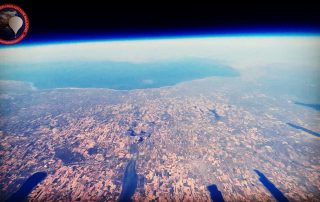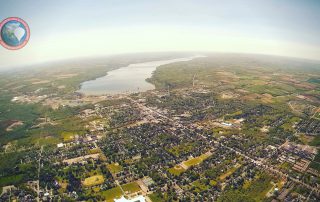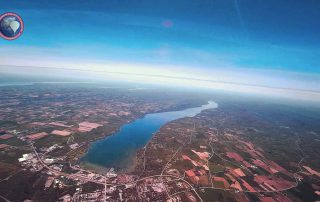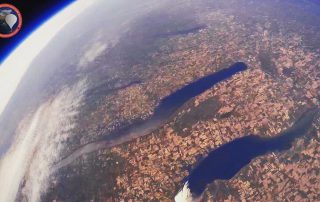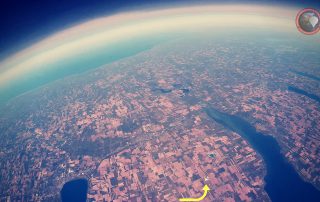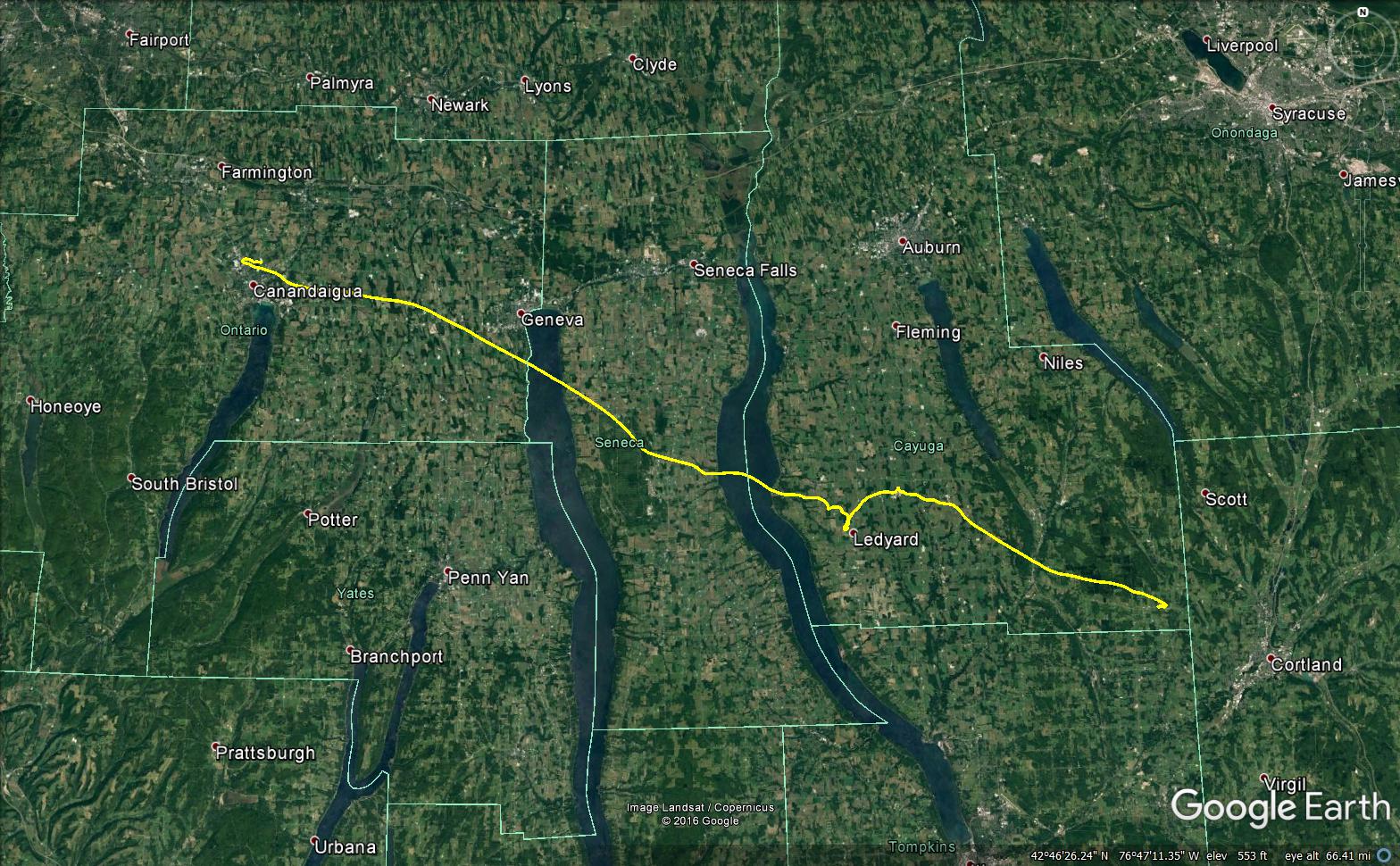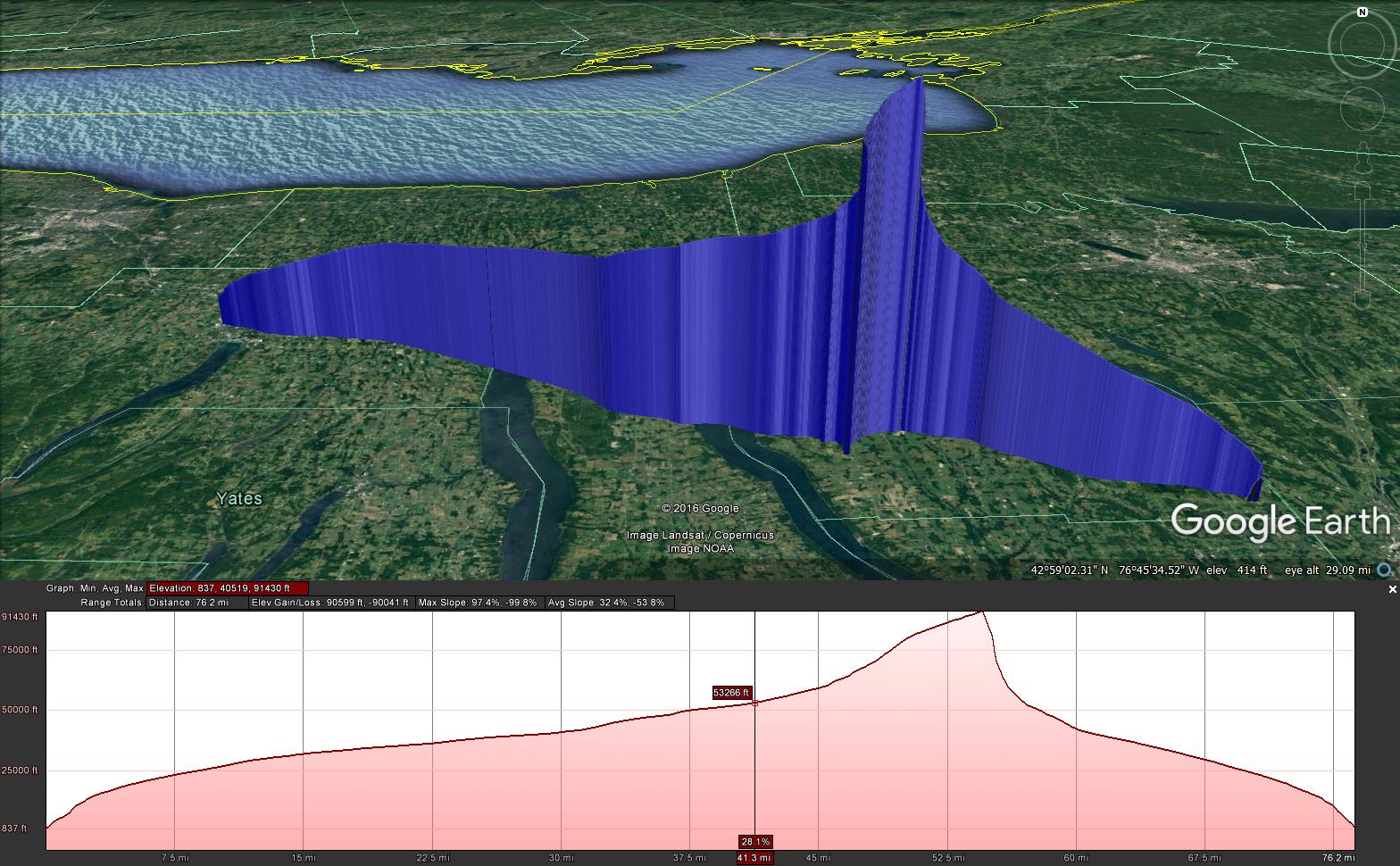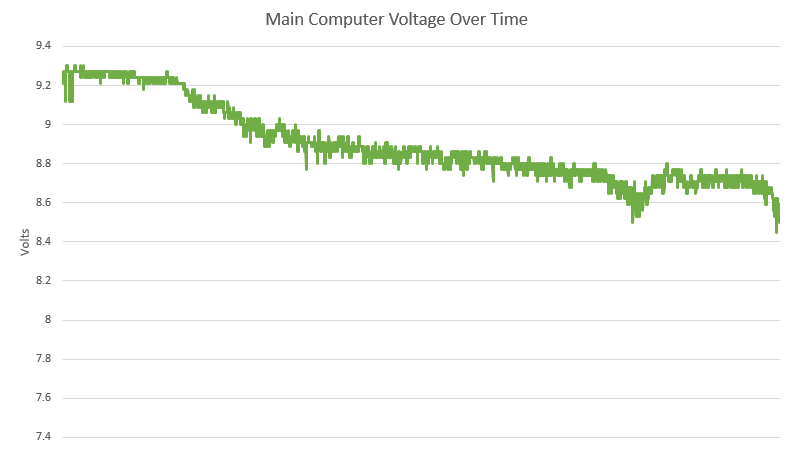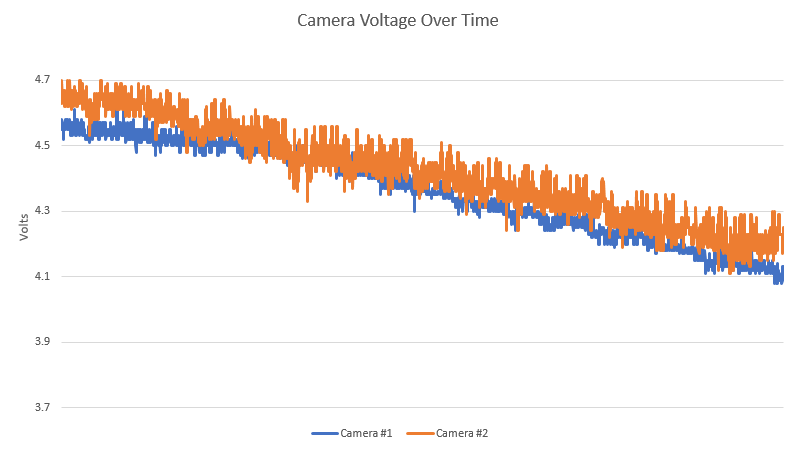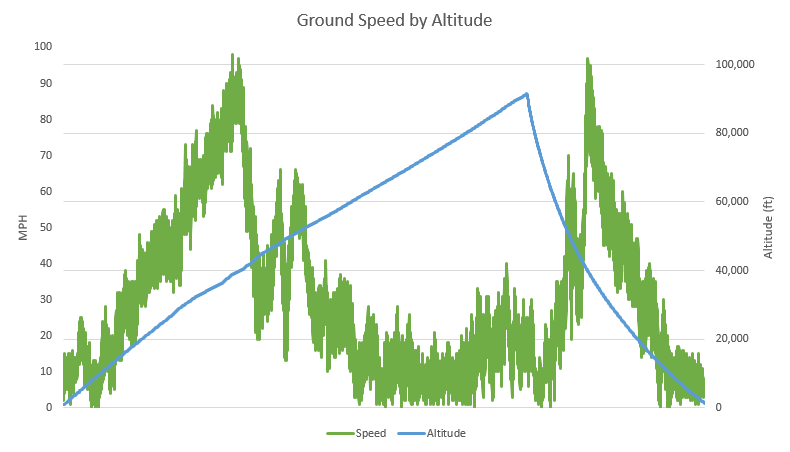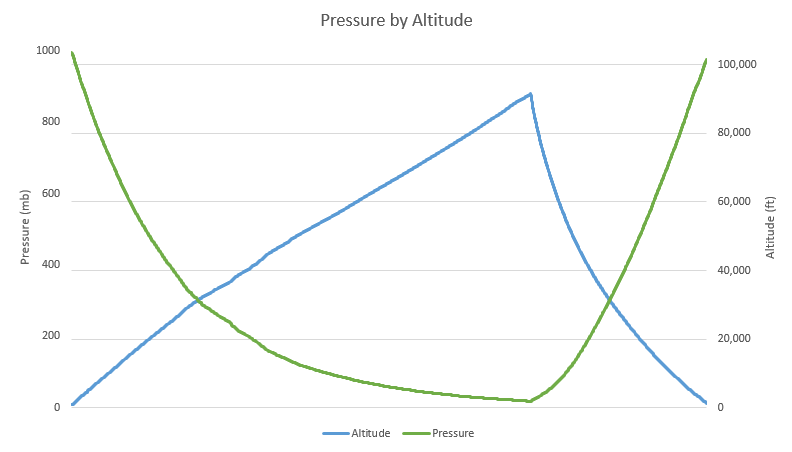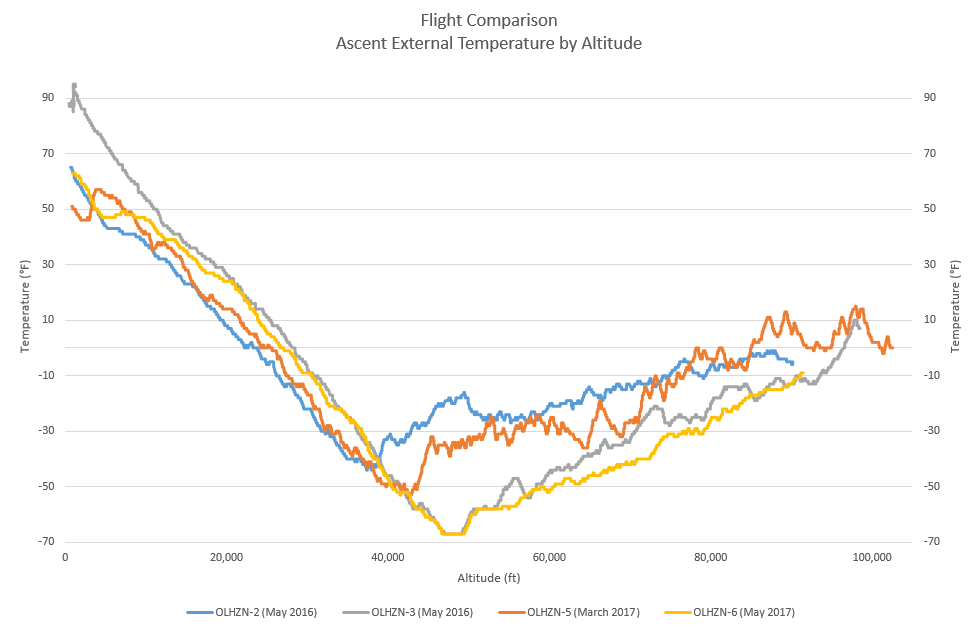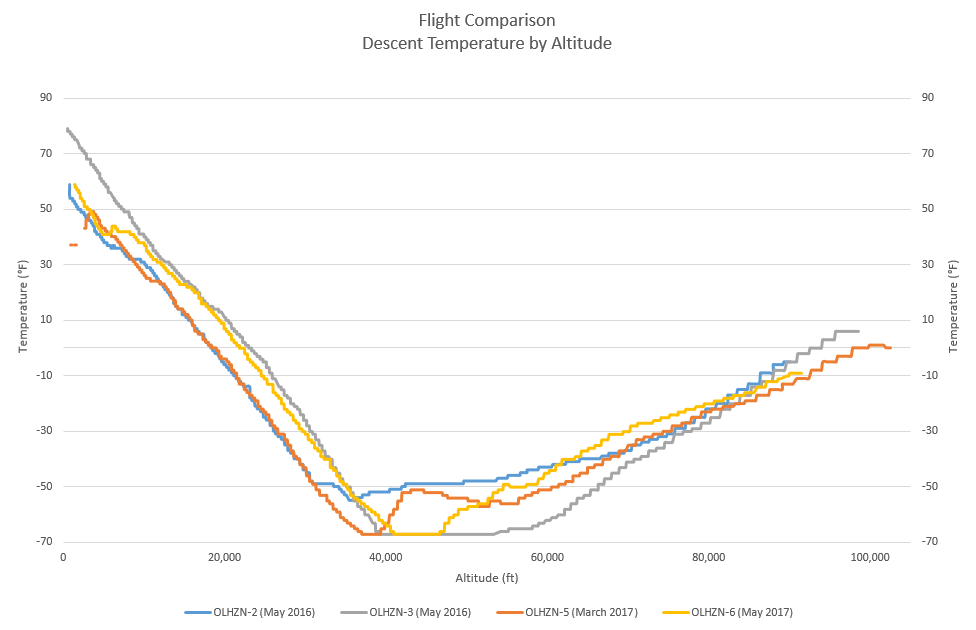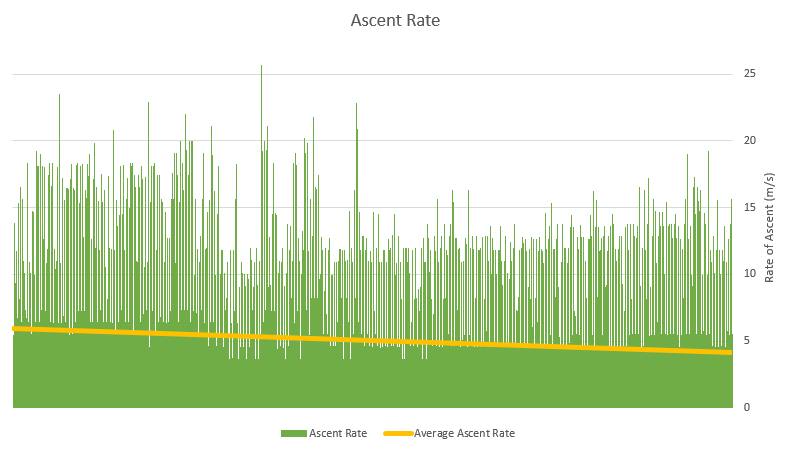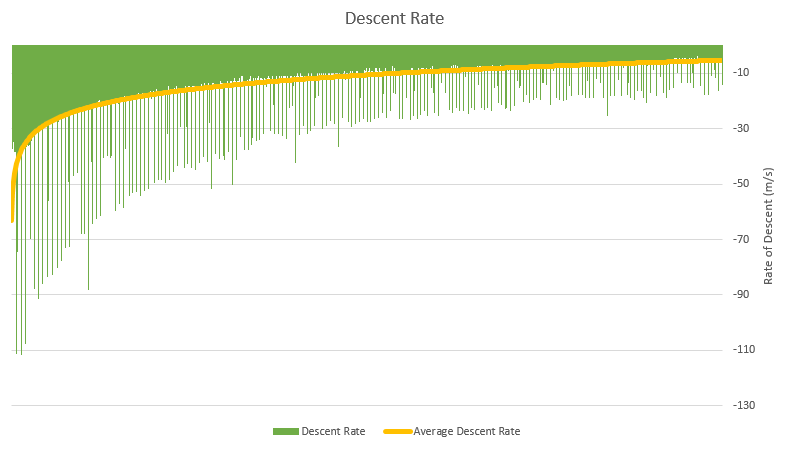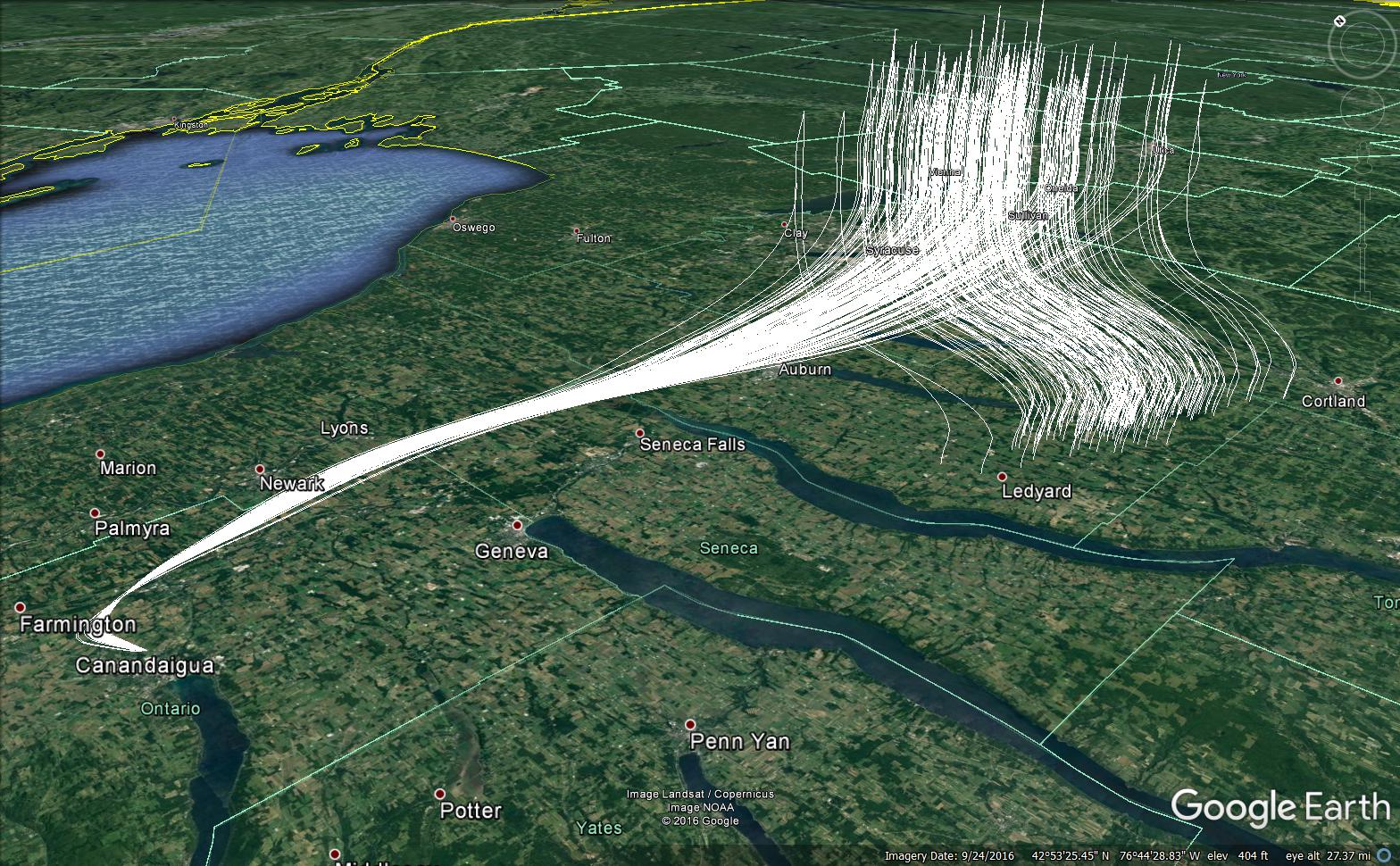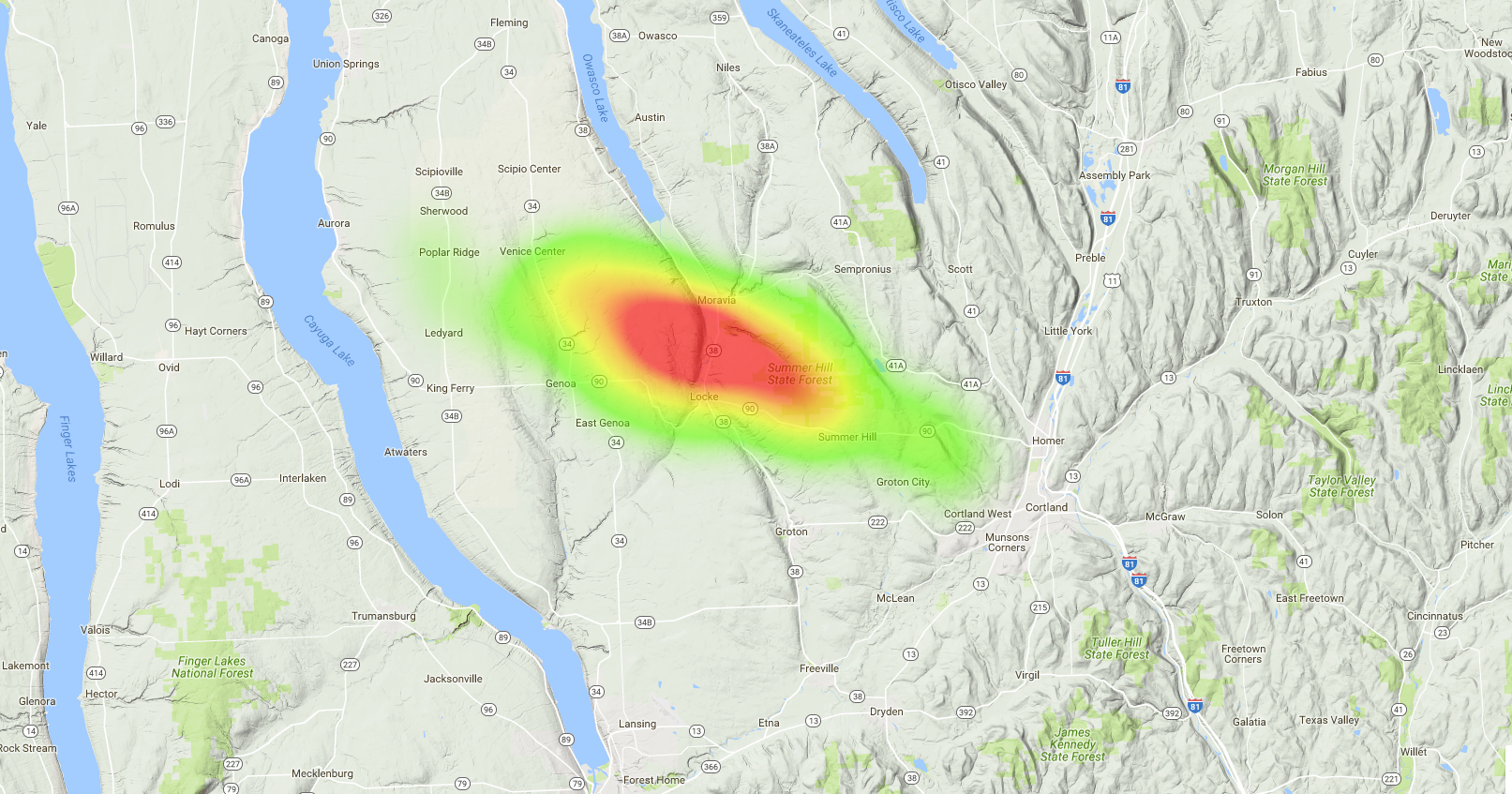Result: Success!! 91,462 FT.
OLHZN-6 was the sixth high altitude weather balloon flight for Overlook Horizon High Altitude Balloons. This flight launched on May 20, 2017 at 1255pm ET (16:55 UTC) from Canandaigua Academy. This flight featured our first upward facing (balloon facing) camera that was intended to record the moment of the balloon burst in slow motion as well as the parachute performance during the descent phase. Unfortunately, this camera stopped operating approximately 75 minutes into the flight and did not capture the balloon burst event. This upwards facing camera was shooting video in 1080p at 60fps utilizing our new Lightdow LD-V3 Action Camera. We also still included two onboard side cameras that were comprised of our flight-proven Lightdow LD4000 Action Cameras. These cameras captured the entire flight. This flight was also intended to feature a much larger 1200g balloon that would have almost certainly push us over 100,000 feet in altitude. Unfortunately, during the launch preparations, a small hole was discovered in this balloon and we were forced to switch to our smaller 800g balloon instead.
The Flight Day Story
OLHZN-6 started out great and ended well too, but had some hiccups along the way. IT was a beautiful clear day and would b one that would allow us to watch the balloon ascend for quite some time after launch. During setup, items were progressing on time and normally with no major issues. Our first minor issue occurred just prior to the start of the live broadcast when we began having severly low mobile bandwidth to power our broadcast. Sadly, we had to abandon the YouTube broadcast and we were only live on Facebook for this launch.
As preparations continued, the original 1200g balloon was filled in a normal timeframe, however, the countdown clock was held at T- 40:03 when a small hole was discovered in the balloon. We quickly assessed how to proceed and decided to deflate this balloon and switch to an 800g backup balloon that would provide a lower altitude, but still hit roughly the same landing zone. This cause a delay of 55 minutes.
The countdown then proceeded normally with 2 other brief holds at T- 20:00 while we adjust the payload backup GPS and again at T- 4:54 when we had to switch radio antennas. Launch occurred at exactly 12:55:30pm ET (16:55:30 UTC).
Shortly after launch, we experienced at “close” flyby from Southwest Airlines flight #4621 enroute from Providence, RI (PVD) to Chicago, IL (MDW). SWA4621 was flying at 38,025 ft. and passed nearly directly over the top of our flight which was flying around 20,000 ft. at the time. Another, even closer flyby occurred with Qatar Airways Flight #713 enroute from Qatar (DOH) to Houston, TX (IAH). QR713 was flying at 36,000 ft. and passed nearly directly under our payload which was flying around 41,000 ft. at the time.
The balloon burst at 2:26:50pm ET (18:26:50 UTC) over Poplar Ridge, NY and descended for 35 minutes with a landing in Summer Hill, NY. When we first arrived on site, we had a hard time locating the payload, but we found out that the landowner located the payload and brought it inside their house. We were able to quickly connect with the landowner and retrieve the payload and head home.

